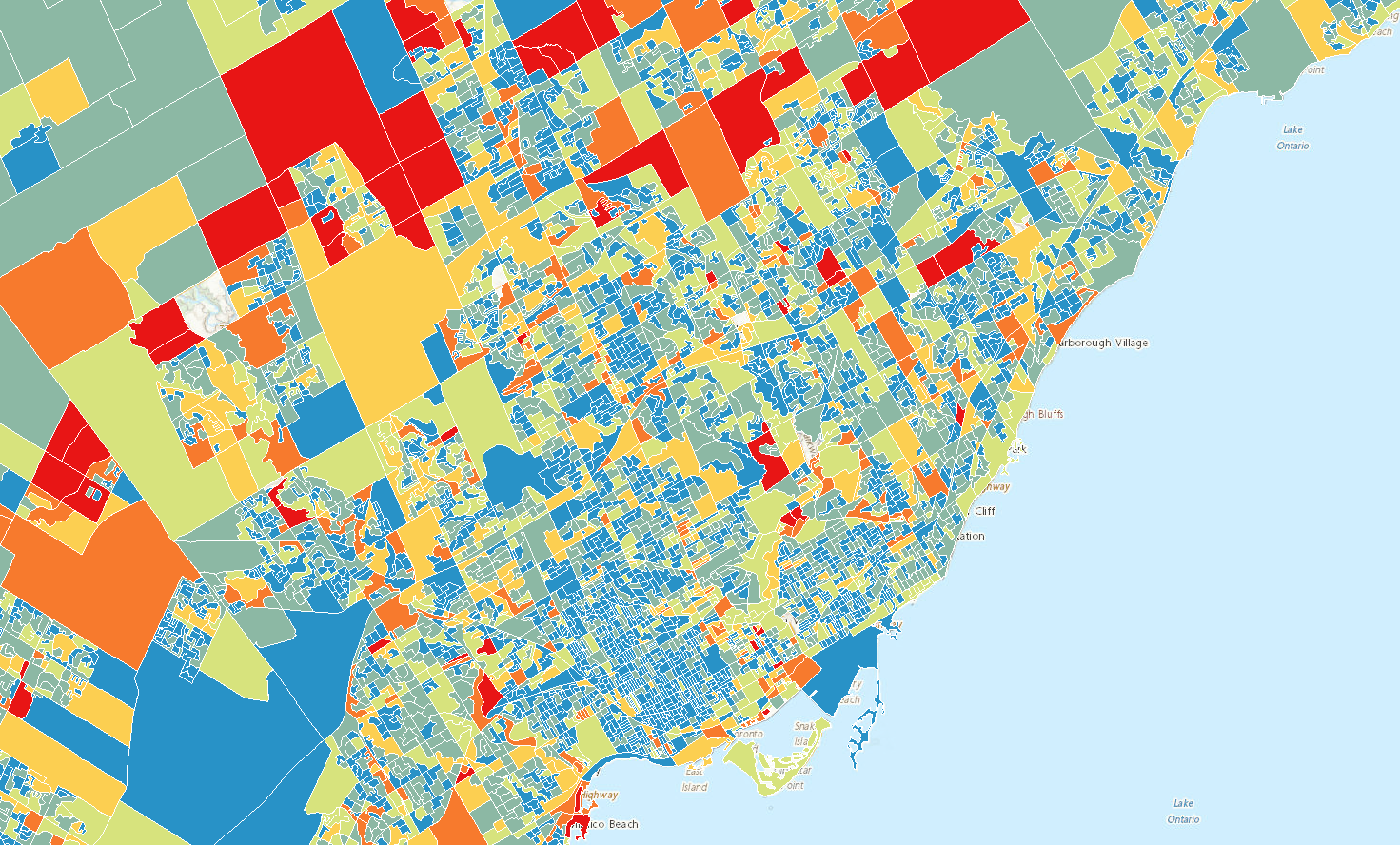statistiques
Type of resources
Available actions
Keywords
Contact for the resource
Provided by
Years
Formats
Representation types
Update frequencies
status
Service types
-
Groupe de municipalités voisines les unes des autres qui sont réunies pour des besoins de planification régionale et de gestion de services communs (comme les services de police et d'ambulance). Ces groupes sont créés selon les lois en vigueur dans certaines provinces du Canada. Division de recensement (DR) est le terme général de régions créées en vertu des lois provinciales (comme comté, municipalité régionale de comté et regional district) ou des régions équivalentes. Dans d'autres provinces et dans les territoires, où les lois ne prévoient pas de telles régions, Statistique Canada définit des régions équivalentes à des fins statistiques en collaboration avec ces provinces et territoires. Les divisions de recensement sont des régions géographiques intermédiaires entre la municipalité (subdivision de recensement) et la province/territoire.
-
Groupe de municipalités voisines les unes des autres qui sont réunies pour des besoins de planification régionale et de gestion de services communs (comme les services de police et d'ambulance). Ces groupes sont créés selon les lois en vigueur dans certaines provinces du Canada. Division de recensement (DR) est le terme général de régions créées en vertu des lois provinciales (comme comté, municipalité régionale de comté et regional district) ou des régions équivalentes. Dans d'autres provinces et dans les territoires, où les lois ne prévoient pas de telles régions, Statistique Canada définit des régions équivalentes à des fins statistiques en collaboration avec ces provinces et territoires. Les divisions de recensement sont des régions géographiques intermédiaires entre la municipalité (subdivision de recensement) et la province/territoire.
-

A collection of online resources where one can obtain different Labour Market Information.
-

Statistics Canada, in collaboration with the Public Health Agency of Canada and Natural Resources Canada, is presenting selected Census data to help inform Canadians on the public health risk of the COVID-19 pandemic and to be used for modelling analysis.The data provided here show the population counts and percentage distribution for various geographic levels by broad age groups, males, females and both sexes, from the 2016 Census.
-

The Canadian indexes of social resilience and vulnerability were created to provide area-based information on resilience and vulnerability to natural hazards and disasters across Canada. Specifically, the Canadian Index of Social Resilience (CISR) aims to reflect a community’s ability to respond to and recover from natural hazards. In contrast, the Canadian Index of Social Vulnerability (CISV) aims to reflect the social vulnerability of an area based on factors that have the potential to amplify the impact of disasters on populations. Before the CISR and CISV were built, indicator frameworks were developed for social resilience and social vulnerability, respectively. Indicators were selected because of their demonstrated association with social resilience or social vulnerability. The selection was informed by the theoretical and research literature, existing indexes, availability of relevant data and engagement with subject-matter experts. The CISR and the CISV were created using data from Dissemination areas (DAs) across the country. The selected indicators were included in a principal component analysis, which is a statistical technique that allows a large number of indicators to be collapsed into a smaller number of interpretable components. Based on the results of the principal component analysis, DA-level scores were calculated for each index. Higher CISR scores correspond to DAs that are more resilient and higher CISV scores correspond to DAs that are more vulnerable. These indexes can be used to better understand areas which may experience the largest disproportional social impacts from natural hazards.
-
This service shows the percentage of population aged 25 to 64 years in private households with a postsecondary certificate, diploma or degree by census division, 2016. The data is from the Census Profile, Statistics Canada Catalogue no. 98-316-X2016001. This data pertains to the population aged 25 to 64 years in private households by the highest level of education that a person has successfully completed. Persons with a post-secondary certificate, diploma or degree includes those with an apprenticeship or trades certificate or diploma; a college, CEGEP or other non-university certificate or diploma; a university certificate or diploma below bachelor level or a university certificate, diploma or degree at bachelor level or above. For additional information refer to the 2016 Census Dictionary for ' Highest certificate, diploma or degree'. For additional information refer to the 2016 Census Dictionary for ' Highest certificate, diploma or degree'. To have a cartographic representation of the ecumene with this socio-economic indicator, it is recommended to add as the first layer, the “NRCan - 2016 population ecumene by census division” web service, accessible in the data resources section below.
-
This service shows the proportion of commuters using sustainable transportation for Canada by 2016 census subdivision. The data is from the data table Main Mode of Commuting (10), Commuting Duration (7), Time Leaving for Work (7), Sex (3) and Age (5) for the Employed Labour Force Aged 15 Years and Over Having a Usual Place of Work or No Fixed Workplace Address, in Private Households of Canada, Provinces and Territories, Census Divisions and Census Subdivisions, 2016 Census - 25% Sample Data, Statistics Canada Catalogue no. 98-400-X2016324. 'Main mode of commuting' refers to the main mode of transportation a person uses to travel between his or her home and his or her place of work. 'Sustainable transportation' refers to persons using public transit (bus; subway or elevated rail; light rail, streetcar or commuter train; or passenger ferry) or active transport (walked or bicycle). For additional information refer to 'Main mode of commuting' in the 2016 Census Dictionary. For additional information refer to 'Main mode of commuting' in the 2016 Census Dictionary. To have a cartographic representation of the ecumene with this socio-economic indicator, it is recommended to add as the first layer, the “NRCan - 2016 population ecumene by census subdivision” web service, accessible in the data resources section below.
-

The Canadian Index of Multiple Deprivation (CIMD) is an area-based index which used 2016 Census of Population microdata to measure four key dimensions of deprivation at the dissemination area (DA)-level: residential instability, economic dependency, situational vulnerability and ethno-cultural composition. Using factor analysis, DA-level factor scores were calculated for each dimension. Within a dimension, ordered scores were assigned a quintile value, 1 through 5, where 1 represents the least deprived and 5 represents the most deprived. The CIMD allows for an understanding of inequalities in various measures of health and social well-being. While it is a geographically-based index of deprivation and marginalization, it can also be used as a proxy for an individual. The CIMD has the potential to be widely used by researchers on a variety of topics related to socio-economic research. Other uses for the index may include: policy planning and evaluation, or resource allocation.
-
This service shows the proportion of average total income of households which is spent on shelter costs by census subdivision. The data is from the Census Profile, Statistics Canada Catalogue no. 98-316-X2016001. Shelter-cost-to-income ratio is calculated for private households living in owned or rented dwellings who reported a total household income greater than zero. Private households living in band housing, located on an agricultural operation that is operated by a member of the household, and households who reported a zero or negative total household income are excluded. The relatively high shelter-costs-to-household income ratios for some households may have resulted from the difference in the reference period for shelter costs and household total income data. The reference period for shelter cost data is 2016, while household total income is reported for the year 2015. As well, for some households, the 2015 household total income may represent income for only part of a year. For additional information refer to the 2016 Census Dictionary for 'Total income' and 'Shelter cost'. To have a cartographic representation of the ecumene with this socio-economic indicator, it is recommended to add as the first layer, the “NRCan - 2016 population ecumene by census subdivision” web service, accessible in the data resources section below.
-
This service shows the predominant mother tongue in each census subdivision based on English, French or non-official language. The data is from the data table Mother Tongue (10), Age (27) and Sex (3) for the Population of Canada, Provinces and Territories, Census Divisions and Census Subdivisions, 2016 Census - 100% Data, Statistics Canada Catalogue no. 98-400-X2016046. Mother tongue refers to the first language learned at home in childhood and still understood by the person at the time the data was collected. If the person no longer understands the first language learned, the mother tongue is the second language learned. For a person who learned two languages at the same time in early childhood, the mother tongue is the language this person spoke most often at home before starting school. The person has two mother tongues only if the two languages were used equally often and are still understood by the person. For a child who has not yet learned to speak, the mother tongue is the language spoken most often to this child at home. The child has two mother tongues only if both languages are spoken equally often so that the child learns both languages at the same time. For additional information refer to the 2016 Census Dictionary for 'Mother tongue'. To have a cartographic representation of the ecumene with this socio-economic indicator, it is recommended to add as the first layer, the “NRCan - 2016 population ecumene by census subdivision” web service, accessible in the data resources section below.
 Arctic SDI catalogue
Arctic SDI catalogue